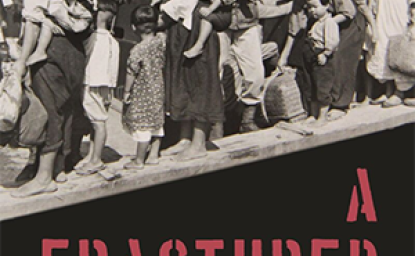174. The Two-Germanies, NATO, and The Warsaw Pact

Many scholars suggest that both NATO and the Warsaw Pact developed out of the failure of the US and the USSR to come to agreement on the reconstitution of postwar Germany. Beyond this argument, however, one can also suggest that the central mechanism of the Cold War arms race in Europe was the political competition between West Germany's Bundeswehr and the National People's Army (NVA) of the German Democratic Republic (GDR) for legitimacy in the eyes of the German people.
This political competition forced the Soviet Union to create a "Potemkin" force—the NVA—to deny the Bundeswehr the exclusive claim of being the sole heir to the German military tradition. This tradition was a powerful source of political legitimacy, especially in the historic Prussian lands that were the territorial base of East Germany. Eventually, the NVA also became a symbol of technological sophistication for the GDR and its ruling political entity, the Socialist Unity Party (SED). The political competition of the late 1950s between the Bundeswehr and the NVA also required the Soviets to create a "Potemkin" military alliance for the NVA to match the NATO alliance, an organization in which the Bundeswehr eventually became the principal conventional force.
An arms race along the inner-German border was the inevitable result of arming the NVA to appear credible in the eyes of its own personnel, the citizens of both Germanies, and in the eyes of NATO as well. A NATO-Warsaw Pact arms race was also the result of arming a limited number of elite units in the Polish and Czechoslovak militaries to approximately the same technical standards as the NVA. These units were designated for participation in joint military exercises involving the NVA and the Soviet troops in East Germany, Poland, and Czechoslovakia (and occasionally Hungary). Without these elite units the Warsaw Pact would not have been able either to project its legitimacy as a coalition force or to confer the status of ally on the Soviet forces in Germany, Poland, and Czechoslovakia. But the price of convincing NATO of the military value of the NVA and the Warsaw Pact was a permanent arms race.
The six divisions of the NVA required about 71,000 soldiers, a number the Soviets could have sent from the USSR to man the same equipment, perhaps at greater cost but certainly with greater political reliability. But to have done so would have constituted a virtual Soviet political attack on the SED.
To achieve military credibility, the NVA obtained relatively advanced weapons and maintained extraordinarily high levels of readiness. But the six standing divisions constituted an unusually small force measured by the per capita standards of other Warsaw Pact states and of West Germany. These NVA divisions also constituted a smaller number than the 92,500 personnel of the internal security detachments of the GDR. Indeed, the ratio of conscripts to career cadre in the regular military and paramilitary forces in the GDR was by far the lowest in the Warsaw Pact: one conscript for every 1.6 "career" soldier. One of the main functions of the NVA may have been to camouflage the internal security personnel in the GDR, an extraordinarily large number by the standards of other Warsaw Pact states.
The peculiar statistical characteristics of the NVA thus in retrospect challenge the conventional wisdom that the NVA constituted a substantial military contribution to the Soviet-NATO balance, as do a number of dysfunctional practices in the NVA discovered by the Bundeswehr during the course of absorbing NVA personnel in the early 1990s.
Although it seems obvious that the NVA would be part of an arms race along the inner-German border, since that's where the central front was, it should be emphasized that there were other possible outcomes to the 1955 resolution of "the German problem." This became clear in 1989-90. Once Soviet leader Mikhail Gorbachev agreed to German unification then the previously intractable issues of European military balances, nuclear deterrence, and arms control virtually disappeared, including Soviet claims that NATO was an aggressive alliance. The Soviets did not even use the NVA as a negotiating card—they abandoned it as if it had no intrinsic military value. They even refused its weapons. And the NVA itself made no institutional effort to save the SED, the GDR, or itself.
To see the NVA in historical perspective, it should be examined through several different prisms:
The West German Prism
The Bundeswehr developed mainly out of the interaction of two issues: the inability of the Soviets and the Western allies to resolve the "German question," and the inability of the Western allies to form a multi-national military force under the auspices of the European Defense Community, a project killed by the French Assembly in 1954. The result was the creation of a distinct West German military force within NATO. The Bundeswehr, however, lacked its own general staff and restricted its own capability for independent action by virtue of its tight integration into NATO command structures.
The Americans initially pushed for the creation of a West German army for purely military reasons—to offset Soviet conventional power. The Christian Democrats under Konrad Adenauer eventually came to see the Bundeswehr as not only a military force but a device for legitimizing the Federal Republic of Germany (FRG) in the eyes of its citizens—and for obtaining full political equality with other West European states. West Germany's entry into NATO as an equal member also put an end to the insults by Kurt Schumacher, head of the Social Democrats, that Adenauer was "Chancellor of the Allies." And the American forces in Germany became allies rather than occupiers. Thus, according to Thomas Alan Scwartz, creating the Bundeswehr and integrating it into NATO proved to be a "dual containment" policy—containing not only Soviet military power but German military power as well.
If the German Democratic Republic remained in 1955 a German state without a national army, the GDR would loose even more legitimacy in the eyes of its citizens than it had in the uprising of 1953. The Soviet forces in Germany would remain occupation forces. And the Socialist Unity Party would appear as a party of collaborators.
The East European Prism
By comparison on the basis of population size and per capita Gross Domestic Product, the six combat-ready, ground force divisions of the NVA (the entire peacetime military of the GDR) were proportionately much smaller than the armed forces of any other Warsaw Pact state, including Bulgaria, which was far removed from the central front. Yet the six NVA divisions also constituted the largest and best-equipped combat-ready force of the East European militaries: 33 percent of the "Category A" non-Soviet Warsaw Pact divisions.
How can one explain the anomaly of Polish, Czechoslovak, and Hungarian militaries that had in relative and absolute terms bigger peacetime ground forces yet did not match the six divisions of NVA in terms of combat readiness and equipment? The political answer is that not one of the national armies of these states had to compare their national forces to the forces of an "alternative" national army. There was no "West Polish Army," no "West Hungarian Army" to provide the kind of mirror in which the NVA had to view itself.
The Soviets came close to having to face such a comparison in Austria, but they suddenly concluded the Austrian State Treaty of 1955 in the two-week interval between the entry of the FRG into NATO and the creation of the Warsaw Pact. The Austrian State Treaty called for a complete Soviet withdrawal from Austria in exchange for pledges of military neutrality and no political union with West Germany. Thus the Soviets averted the following possibilities: 1) the creation of two Austrian states; 2) a political competition between two Austrian armies; 3) the incorporation of a West Austrian Army into NATO; 4) the extension of the central front from the Baltic Sea to the Italian Alps.
The Grechko Prism
Andrei Grechko, a Warsaw Pact Commander-in-Chief and later Soviet Defense Minister, was present at the creation of the NVA and the Warsaw Pact in his capacity as the Commander of the Group of Soviet Forces in Germany. He could have provided the institutional memory necessary for synchronizing the requirements of a "Potemkin" NVA with those of a "Potemkin" Warsaw Pact and those of the actual Soviet-NATO military balance, including a nuclear balance.
In his long and distinguished career, Grechko commanded multi-ethnic forces organized as separate national formations on several occasions: within the Soviet Army in 1942-44, in combined Soviet-East European armies in 1944-45, in East Germany in 1953-57, and in the Warsaw Pact during his tenure as its commander from 1960 to 1967. He was Soviet defense minister from 1967 until his death in 1976 and a Politburo member after 1973. In these posts he witnessed the SALT I and ABM treaties, the Soviet-German treaty of 1970 (and subsequent related treaties), the initiation of the Mutual and Balanced Force Reduction Talks, and the Helsinki Agreements of 1975.
His career suggests that he may have mastered the practical dynamics of meeting severe military challenges on the external front while meeting political requirements on the internal front for maintaining non-Russian troop formations, even at the risk of creating unreliable ethnic/national units. His basic solution may have been to calculate the true correlation of forces as the ratio of Russian/Soviet forces to potential enemy forces while paying the financial and administrative costs of maintaining unreliable "Potemkin" national forces that nonetheless were politically useful to the Soviet leadership.
At the time of the creation of the NVA and the Warsaw Pact, neither Grechko nor other Soviet leaders could have anticipated the long-term economic costs of an arms race that required substantial expenditures on the NVA and other Warsaw Pact armies whose functions were largely political.
Dr. Jones spoke at an EES Noon Discussion on December 16, 1998.
Author
Associate Professor, Jackson School of International Studies, University of Washington, Seattle

Global Europe Program
The Global Europe Program is focused on Europe’s capabilities, and how it engages on critical global issues. We investigate European approaches to critical global issues. We examine Europe’s relations with Russia and Eurasia, China and the Indo-Pacific, the Middle East and Africa. Our initiatives include “Ukraine in Europe”—an examination of what it will take to make Ukraine’s European future a reality. But we also examine the role of NATO, the European Union and the OSCE, Europe’s energy security, transatlantic trade disputes, and challenges to democracy. The Global Europe Program’s staff, scholars-in-residence, and Global Fellows participate in seminars, policy study groups, and international conferences to provide analytical recommendations to policy makers and the media. Read more




